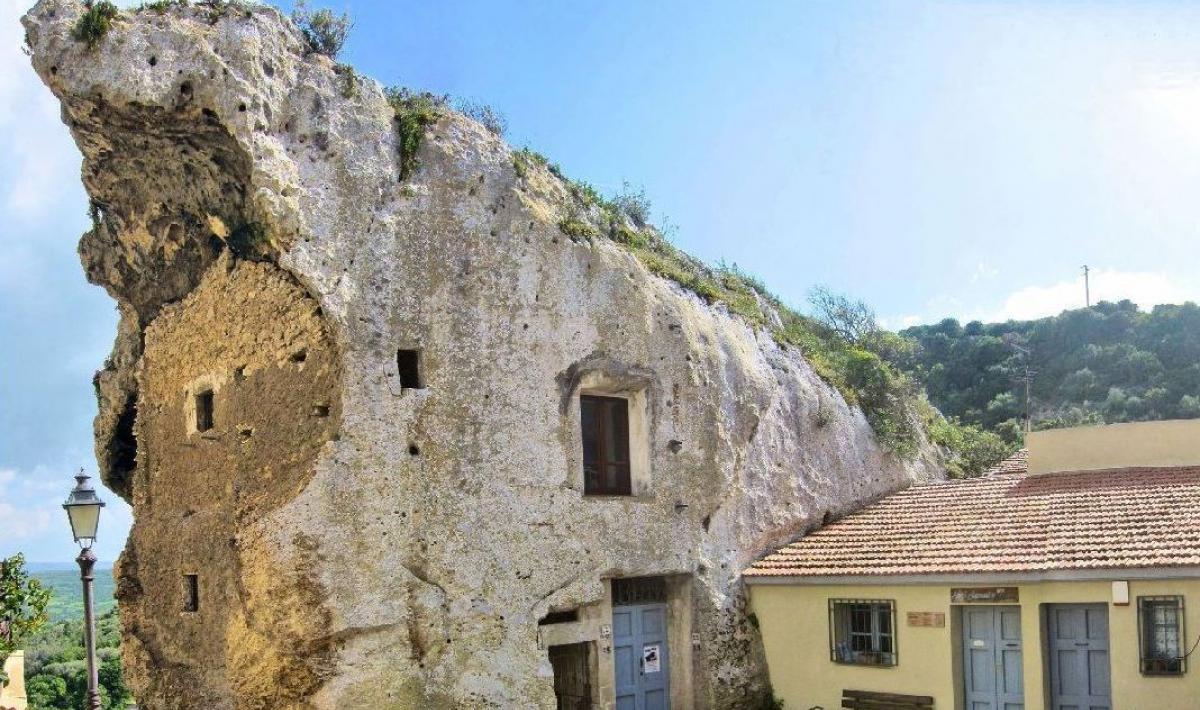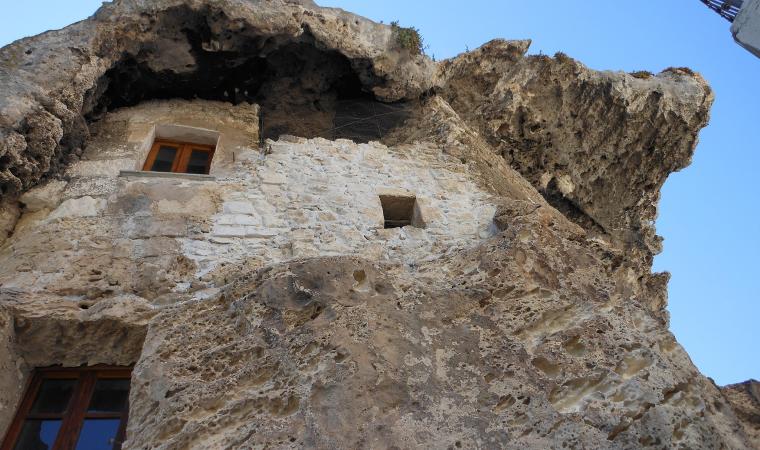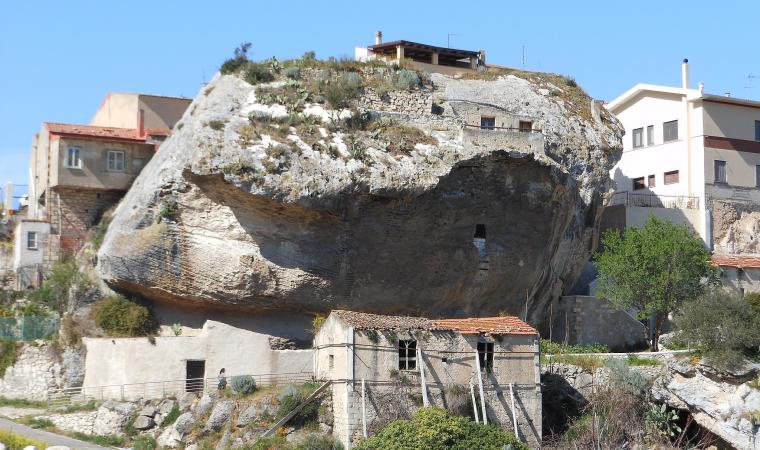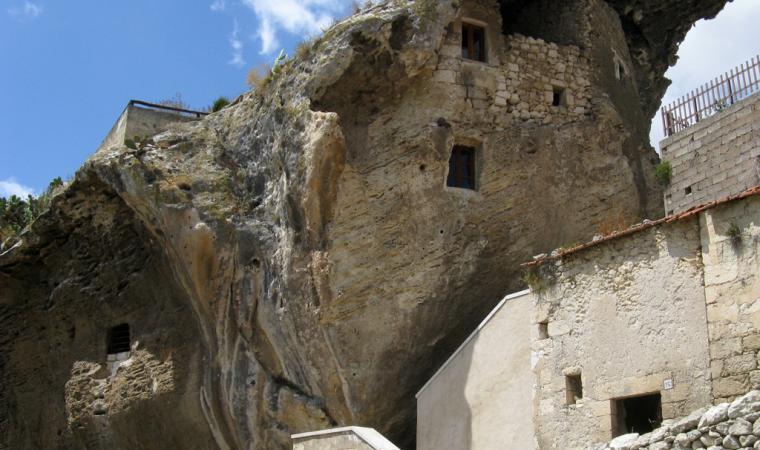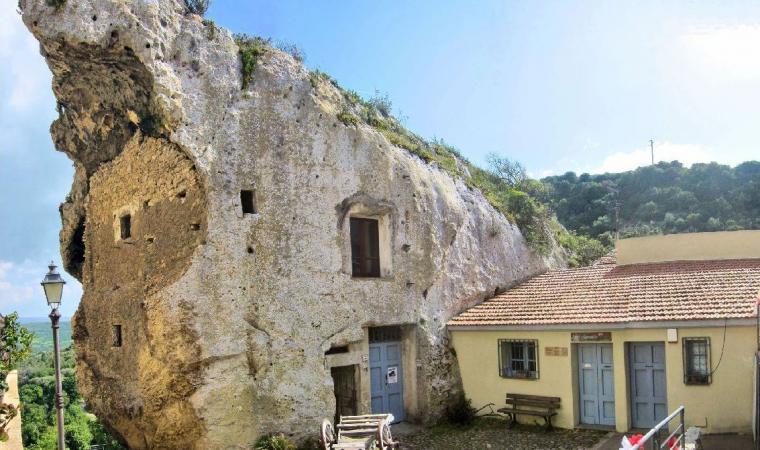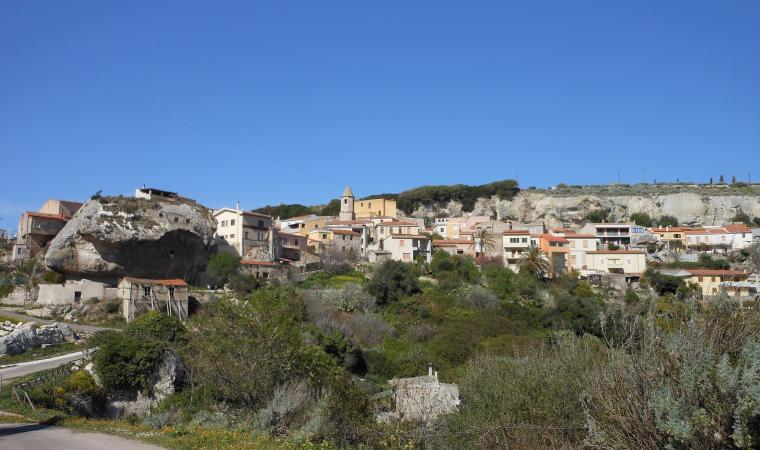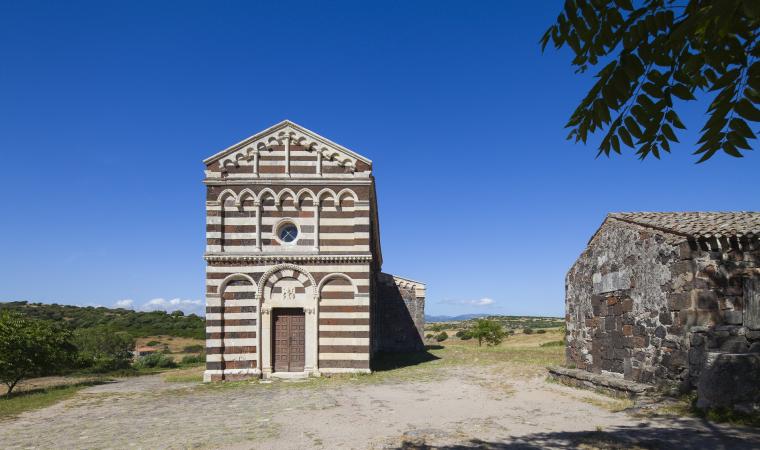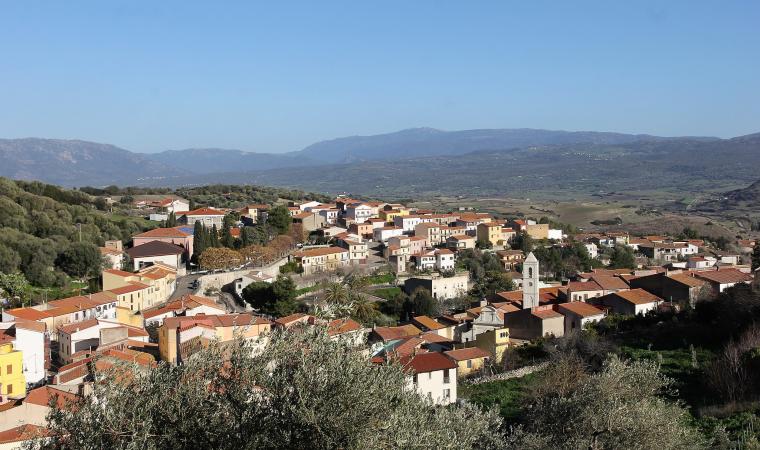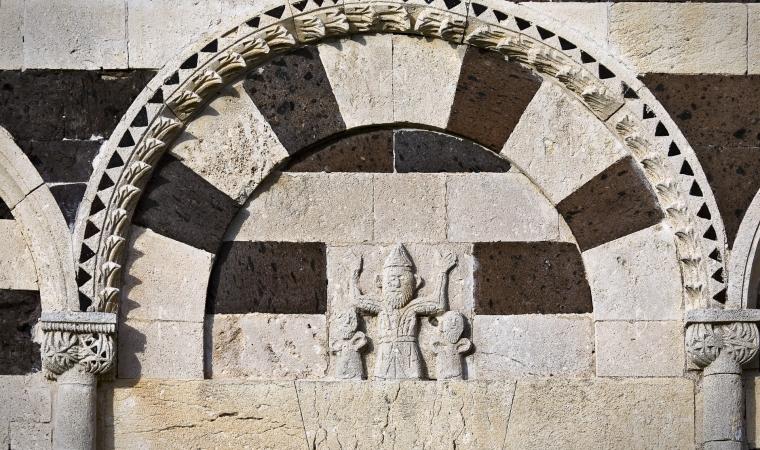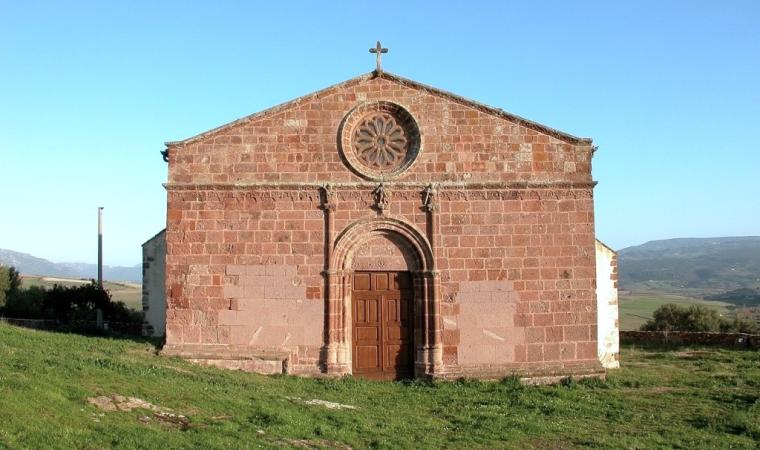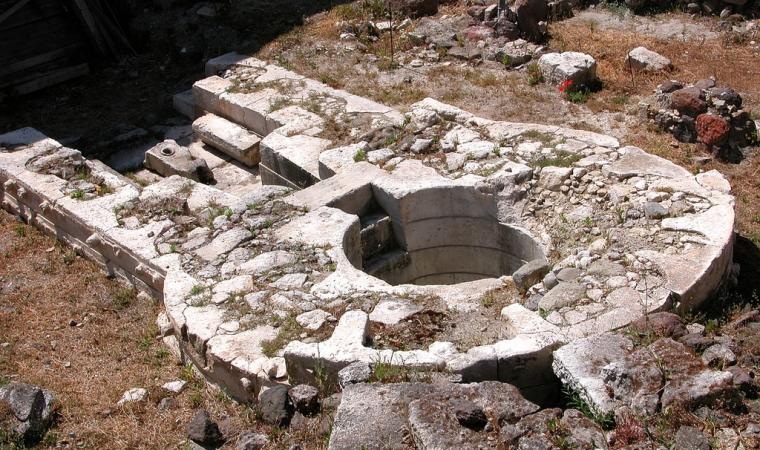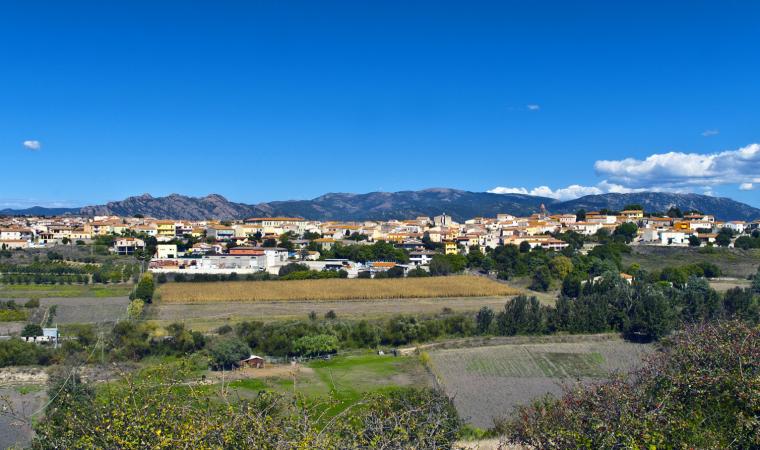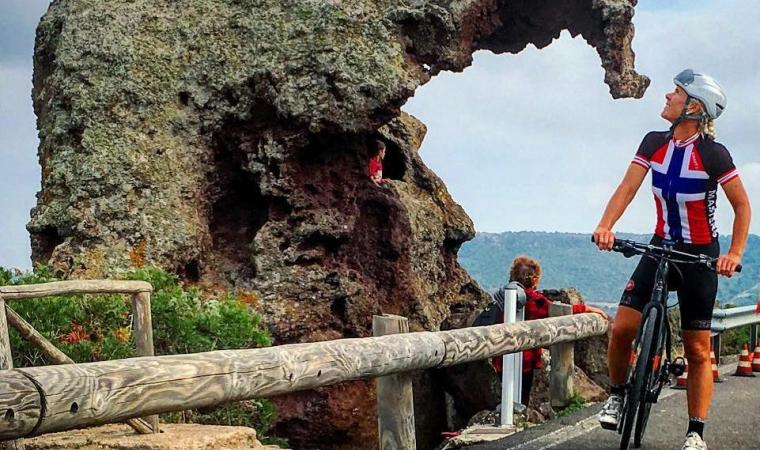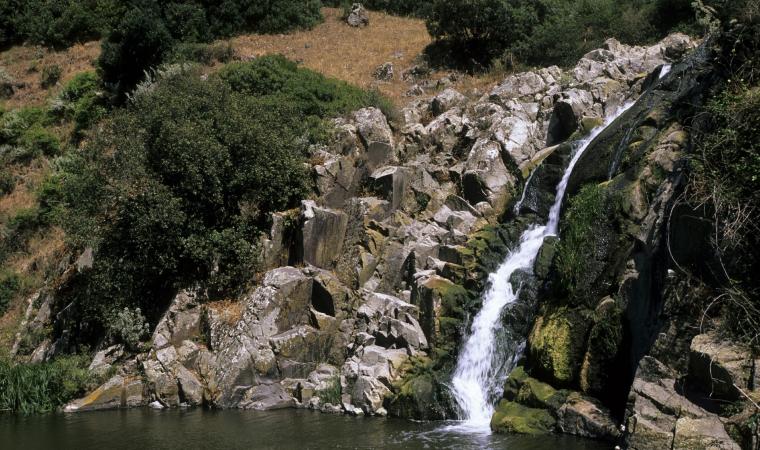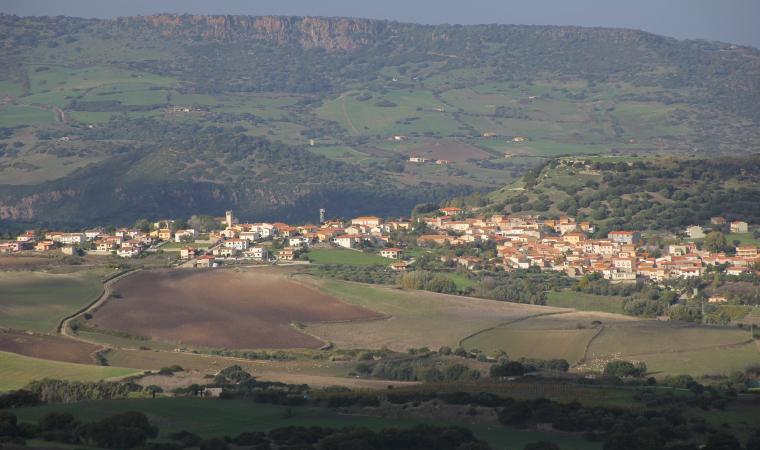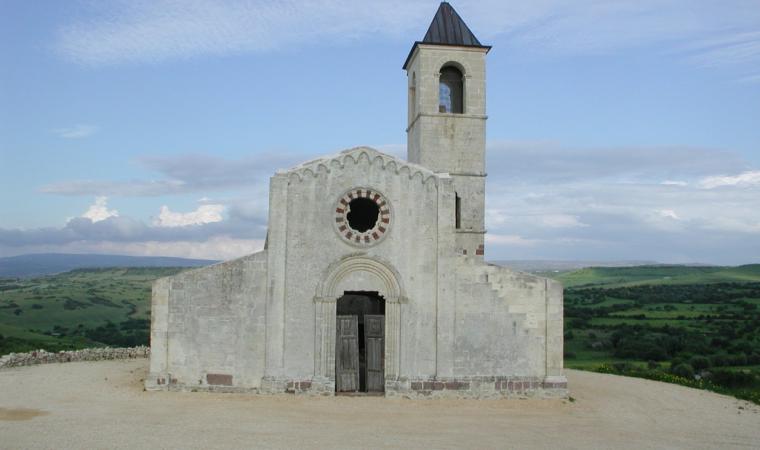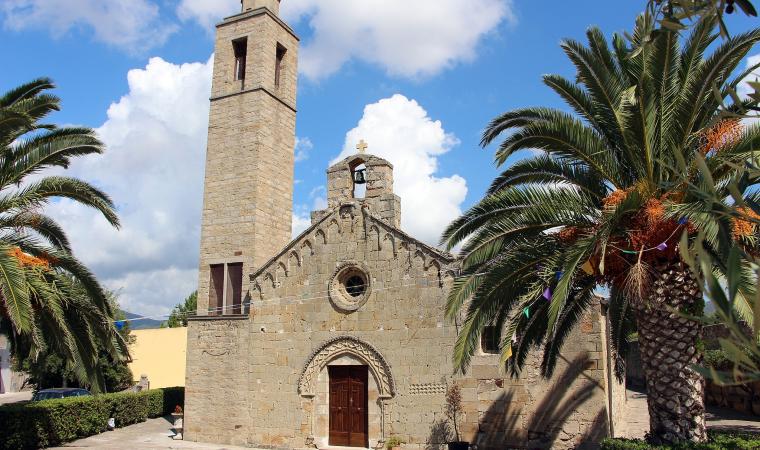A Domus de Janas - a ‘house of fairies’ - is usually an artificial cave dug into rocky blocks and used as prehistoric burial sites. La Rocca is also a Domus de Janas but was built into a boulder as big as a three-storey building, shaped firstly by nature and, more significantly, by man. It is thus considered as the ‘Domus de Janas cathedral’, perhaps being the largest on the island. La Rocca rises up on the edge of the Baldana valley, on the lip of the limestone plateau where Sedini, a village in the Anglona region, is located just a few kilometres from Castelsardo. The monument dominates the town from above, structured around it like a natural amphitheatre, between the hills of La Maglina and Lu Padru, reached by travelling along the main street of the town. The closer you get to the ‘house in the rock’, the more details about the twelve-metre-high boulder can be discovered.

